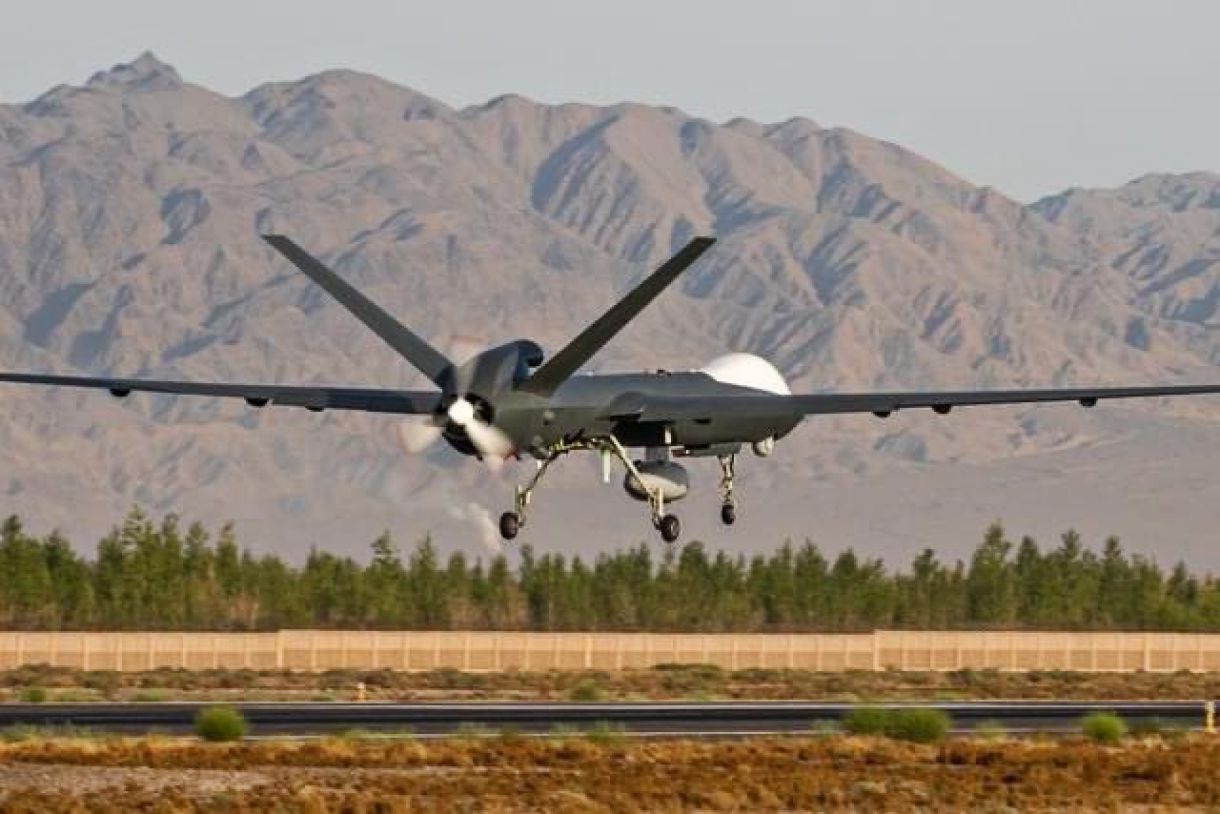The Indonesian Air Force (IdAF) has announced its plans to use unmanned aerial vehicles (UAV) to conduct beyond-visual-range (BVR) aerial combat. Will this be the future of drone warfare?
The IdAF’s chief, Air Marshal Mohammad Tonny Harjono, announced the move on April 22 at the Aerospace Field in Bantul, Yogyakarta. He also discussed plans to acquire Chinese-made CH-4 and Turkish-origin ANKA and Bayraktar drones.
It is not clear which versions of the ANKA and the Baykar unmanned combat aerial vehicles (UCAV) Jakarta is planning to purchase: the ANKA-3, the TB2, or the TB3.
However, other reports suggest that, for the air-to-air combat role, Indonesia plans to indigenously develop a drone of its own, based on its experience after using the Chinese and Turkish UCAVs. The Indonesian vision is also significantly similar to Turkey’s evolving techno-military concept of attempting to pioneer anti-air warfare with drones, embodied in its Akinci and Kizilelma UCAVs.
Air Force Chief Announces Modernization Plans
Harjono said that “there will be a new unmanned aerial vehicle (UAV) to complement the national weapons system….The unmanned aircraft will use satellite technology to support beyond-visual-range (BVR) or long-range air combat,” he added.
“We can operate it from outside the area that we want to monitor; for example, in Papua or any other area, we can fly it from outside Papua,” Harjono said at the event, celebrating the 78th anniversary of the Indonesian Air Force. He explained that the UAVs being imported include “the CH-4, Anka, and Medium Altitude Long Endurance (MALE) Bayraktar drones”, the report said.

“Let’s pray that the Air Force will be adaptive to follow technological developments and changes in national, regional, and global situations,” he remarked. According to him, these “modern drones” are part of the new defense equipment aircraft being imported to “strengthen the Indonesian Air Force’s capabilities.”
As a part of its modernization process, the IdAF plans to procure 42 Dassault Rafale fighter jets by 2026, besides an Airbus A400M transport aircraft, an Airborne Warning and Control System (AWACS) aircraft, and a refueling aircraft (tanker) or a tanker or multi-role tanker transport (MRTT) aircraft.
The Air Marshal further stated that “these aircraft will augment the existing national defense equipment, including civil transport aircraft from CASA, helicopters, and Falcon VIP military transport aircraft.”
Drones for Air-to-Air Combat?
According to Arms Trade, Indonesia is implementing a national project to develop a MALE-class attack UAV that includes “several design features of the CH-4.” The project is known under the designation “Elang Hitam” (Black Eagle).
The development is being carried out by PT Dirgantara Indonesia (PTDI) with the Indonesian Air Force Command, the state-owned PT Len company, the National Institute of Aeronautics and Space (LAPAN), and other national manufacturers.
However, the goal of using drones for aerial combat is close to Turkish efforts in this direction, given the close diplomatic ties between the two countries. Turkey’s Kizilelma loyal wingman UCAV has been expressly envisaged for this same purpose.
The Daily Sabah said that the Defense Industries Research and Development Institute (SAGE) of the Scientific and Technological Research Council of Turkey (TÜBITAK) is “working with the team that developed Turkey’s state-of-the-art unmanned combat aerial vehicle (UCAV) Akıncı for air-to-air missiles.”
TÜBİTAK SAGE’s General Director, Gürcan Okumuş, described air-to-air missiles as the “sword” of aircraft. “With these missiles, we aim to see without being seen and to be able to hit from far away. It will be much easier for us to do this with our missiles,” he added.
The Indonesian effort towards a UCAV firing air-to-air missiles appears to be replicating this capability that would allow a fighter aircraft to release missiles at enemy planes from another aerial platform while remaining at a safe distance.
This is different from a drone undertaking aerial combat, which would require tight maneuvering and sophisticated intelligent decision-making. This is in the realm of highly advanced artificial intelligence (AI) and autonomous flight control algorithms, which are still in the nascent stages of development in many countries.
Even a fully manually controlled drone would be unable to perform nimble aerobatics owing to the signal lag from the ground control station and a relatively softer airframe that might not be able to sustain the stress of supersonic flight.
Harjono’s mention of a “satellite link” for the BVR air-to-air combat suggests that either the drone or the missile (or both) would receive control and guidance signals from the spacecraft. The drone itself would, perhaps, receive target cueing from a fighter aircraft over a data link, with the AWACS alerting the jet. The project would require an entire host of supporting platforms for drone aerial warfare.
Chinese CH-4 Drones
Indonesia signed a contract for the supply of the ‘B’ version of the CH-4 (CH-4B) with the China Aerospace Science and Technology Corporation (CASC) in 2019 and presently has a fleet of six drones. The first two CH-4s made their public debut in an October 2019 military parade.
Since the details of the 2019 contract are not known, it is not clear if the new CH-4Bs announced are a fresh order or merely a final operational induction of the six UAVs following tests and airworthiness certification.
Janes said in a September 2021 report that the UAVs were being “used primarily for evaluation, training, and doctrine-building purposes.” The CH-4 variant supplied to Indonesia has an operating radius of between 1,500 km and 2,000 km and can be operated via satellite link.
In April 2021, the country also received Chinese-made AR-2 air-to-surface precision-guided missiles to be operated by the CH-4Bs.
- The author can be reached at satamp@gmail.com
- Follow EurAsian Times on Google News




